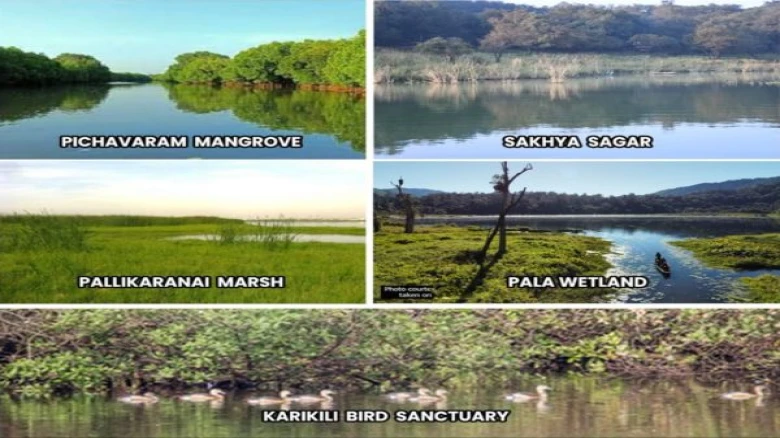India is home to the most Ramsar sites in Asia. A wetland is an environment that experiences seasonal or ongoing flooding from water.
Digital Desk: Karikili Bird Sanctuary, Pallikaranai Marsh Reserve Forest, Pichavaram Mangrove in Tamil Nadu; Pala wetland in Mizoram; and Sakhya Sagar in Madhya Pradesh are the five new Ramsar sites that India has designated as "wetlands of international importance," bringing the total number of such sites in the nation up to 54.
The treatment of India's wetlands has significantly improved due to the importance Prime Minister Shri @narendramodi Ji has placed on environmental protection and conservation. I'm happy to announce that five more Indian wetlands have received Ramsar designation as wetlands of worldwide importance," Union environment minister Bhupender Yadav wrote on Twitter.
Contracting parties are required to find and add appropriate wetlands to the "list of wetlands of international importance," also known as the Ramsar List, under the Ramsar Convention, an intergovernmental convention for the conservation of wetlands.
Let's have a look at the newly added Ramsar sites :
1|Tamil Nadu's Pallikaranai Marsh Reserve Forest: In Chennai, there is a freshwater marsh. It is Chennai's only surviving wetland ecosystem. It is one of South India's last remaining natural wetlands.
2| Karikili Bird Sanctuary, Tamil Nadu: It is a 61.21-hectare protected area in Tamil Nadu's Kancheepuram District. It is located 75 kilometers from Chennai.
3| Pichavaram Mangrove, Tamil Nadu: It is located near Chidambaram in Tamil Nadu's Cuddalore District. It has an area of 1100 hectares and is thus one of the country's most extensive mangrove forests.
4| Pala Wetland, Mizoram: Mizoram's most prominent natural wetland. Green woodlands surround the swamp. It is known for its diverse animal species, which include several animal and bird species.
5| Sakhya Sagar, Madhya Pradesh: This lake is located in Shivpuri, Madhya Pradesh, and is part of the Madhav National Park.
About the Ramsar Convention:
On February 2, 1971, UNESCO established the Ramsar Convention. It is an intergovernmental environmental treaty named after Ramsar, Iran, where it was signed.
The convention took effect in 1975. It promotes international cooperation and national action to conserve wetlands and sustainably use their resources. In addition, it identifies wetlands of global significance all over the world.

Leave A Comment